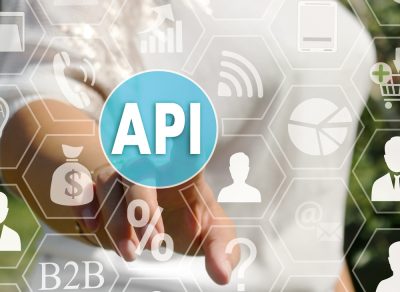For a long time now, tech-savvy professionals have been
referring to the buzzword “fintech” – short for Financial Technology.
This term encompasses Digital Transformation and its capacity to revolutionize
how financial services are provided.
In short, the implications of this are far-reaching. We can
expect to witness new business models and market players emerging, leading to
simplified processes, and disintermediation of traditional services and
products – all presenting a host of exciting opportunities for those who seize
them.
The conversations remain similar when the topic of
discussion is insurtech, which encompasses all digital technological advancements
with respect to the insurance sector.
Fintech and insurtech are two powerful forces that work
symbiotically to drive progress. By mutually reinforcing each other, they are
paving the way for a brighter future together.
To comprehend the size of the fintech market, it’s important
to understand that global investment amounted to $107.8 billion in only the
first half of 2022 and exceeded $111.2 billion during the previous six months
(the second half of 2021). This illustrates just how rapidly this sector is
growing.
Transforming to the more particular arena of insurtech, we
notice that at the end of 2021, a respectable market value was held at $3.85
billion, with estimations predicting an astounding 51.7% compound annual growth
rate by 2030.
Historically, the insurance industry had been hindered by
its lengthy and tedious processes. This is no longer true as now we have seen a
complete shift in this sector’s digitization process.
This transition has established a discernible trajectory,
leading from digital identification and authentication systems to the
harvesting of data – arguably the most treasured asset in any organization
nowadays – to forging an innovative bond with customers.
In this article, we will be examining three essential
regions: digital identity and electronic signature; legally approved digital
preservation; and lastly, CRM systems to CCM that are digitized yet
personalized.
Unlock the power of digital identity and electronic signing
AGID (Agency for Digital Italy) describes Electronic
Identification as a method of using personal authentication data electronically
to distinguish one individual or business from another. This process offers
users the ability to identify themselves online confidently and securely.
In summary, digital identity is the only way to ensure that
an individual online user can be identified within a computer system.
Furthermore, it’s also important since it gives proof of which person is
conducting specific activities on the Internet at any given time.
Let’s cut to the chase: digital identity systems make it
possible for insurance companies to onboard customers directly online without
tedious paperwork, all while complying with relevant laws and regulations and
providing maximum security.
The electronic signature tool is no exception to this
pattern. Remotely signing documents and contracts from any type of device
through digital signature solutions has become commonplace, making it essential
for you to integrate these tools into your processes to improve efficiency as
well as provide a more seamless customer experience.
Ensure digital longevity with secure compliance
Prior to delving into the discussion of digital
preservation, it is essential to recognize the distinction between
dematerialization and digitization. Dematerialization processes refer to
swapping paper documents for their electronic equivalents; conversely,
digitizing procedures carry an even greater level of depth.
By digitizing paper documents and analog processes, we can
reduce the expenses associated with manual techniques such as postage, storage
space, etc., while granting digital counterparts full legal standing. Fintech
and insurtech companies are reaping numerous advantages from this shift to
digital technology; not only does it save a great deal of money but also allows
them to cut down on time-consuming paperwork that is often integral in the
insurance industry. Digitization enables us to streamline our business
operations for greater efficiency.
Imagine the time and energy it can take to find a single
piece of paper amongst mountains of paperwork. Even worse, what if you only
need to search for certain pieces within one document? That’s why efficiency is
paramount in this situation – searching through all these documents would be so
much more difficult without it.
Thanks to digitization, these challenges are no more! You
can quickly and precisely locate what you’re looking for in mere moments. Best
of all, consistent digital storage allows you to avoid any risks regarding
damage, deterioration, or compilation errors.
Imagine the ease of accessibility to entire documents or
segments when working in a digital world; this is accomplished without delay or
hassle, and with minimal risks. In contrast, accomplishing such tasks through
an analog form may prove slow-paced and riddled with difficulties.
Moreover, let us not forget the transparency aspect or
fundamentally, the countless possibilities that can be taken advantage of by
analyzing your document repository on an entirely new level. Imagine all that
you could gain through intelligent data analyses of large datasets or even
deeper levels of “smart data” embedded in enterprise documents.
However, digitization offers more than just fulfillment; it
also provides novel opportunities for electronic filing and CRM/CCM processes
that can reap great rewards.
Transitioning from Customer Relationship Management to
Content-Centric Marketing
This post has delved into the realms of fintech and
insurtech, particularly accentuating the delicate process of onboarding. From
digital identification methods to regulatory storage within digital archiving –
we have discussed numerous key components that lead us to our conclusion: this
last step is perhaps the most determinative one.
Digital archiving yields one of the most useful results: a
powerful CRM system that is incredibly efficient, intuitive, and can be used
for exhaustive analysis. In other words, it unlocks an invaluable trove of
information about your customers.
What does this signify? An unparalleled understanding of
your target market.
With a greater understanding of the insured, communication
between insurance companies and individuals is revolutionized. This
breakthrough in Customer Relation Management (CRM) systems also has an immense
influence on future CCMs (Customer Communication Management). What’s the
central keyword for upcoming CCMs? Personalization.
By beginning with data-driven analysis, companies can craft
personalized digital conversations with their customers. The dialogue should consider
individual risk profiles and the specific characteristics, needs, and desires
of those individuals. It’s essential that this data is taken seriously – within
the insurance industry which has grown to become the third largest
manufacturing sector yet also holds one of the highest “planned
churn” rates: climbing from 19.5% in 2018 to 22.5%.
To put it simply, customer retention is the priority for
businesses in this industry. Companies must strive to build a lasting
relationship with their customers and develop strategies that will help them
achieve this goal. With the right tools such as certification and
authentication systems, electronic signature capabilities, digital preservation
technology, personalized marketing tactics, and communication options at hand –
companies are sure to reach their goals of keeping customers engaged.











